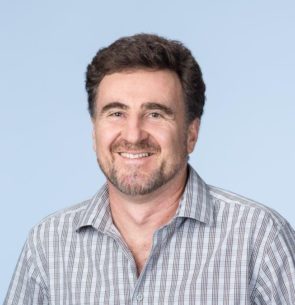 On USC Dornsife Week: Can A.I. cut the cost of making new drugs?
On USC Dornsife Week: Can A.I. cut the cost of making new drugs?
Vsevolod Seva Katrich, associate professor of quantitative and computational biology and chemistry, takes a closer look.
Dr. Katritch is an is a computational biologist and chemist at University of Southern California Dornsife, and a founding co-director of the Center for New Technologies in Drug Discovery and Development (CNT3D). His research is focused on deciphering the molecular function of membrane proteins in atomistic detail and applying this knowledge to discover new ligands to clinically important targets. His work has led to 8 patents and more than 140 papers, including a breakthrough screening of billions of chemical compounds published in Nature, as well as seminal reviews on GPCR structure-function and drug discovery technologies. He is named among Web of Science’s Highly Cited Researchers in two categories: pharmacology/toxicology and biology/biochemistry.
Dr. Katritch graduated and received Ph.D. from Moscow Institute of Physics and Technology, followed by postdoctoral training at Rutgers University and The Scripps Research Institute. Before joining USC in January 2015, he served as a director of computational chemistry at SIGA Technologies and held research faculty positions at the University of California, San Diego, and The Scripps Research Institute.
Computer Modeling and A.I. Transform Drug Discovery
Traditional drug discovery has long relied on trial-and-error methods, which are slow and expensive, usually taking up to 15 years and costing approximately $2 billion. However, recent advances in computer modeling, combined with the power of AI and access to vast data resources, open new avenues for much faster and more efficient drug discovery.
The newest excitement is about AI-based drug discovery, but what’s even more powerful is a combination of AI and structure-based methods.
Structure-based drug discovery utilizes knowledge of the three-dimensional structures of biological targets. Think of the target receptor as a lock and the drug as the key. By digitally modeling billions and even trillions of virtual keys in the lock, we can predict which keys would be a better fit. If the model is good, this process yields better results than traditional trial-and-error testing of millions of random keys. reducing the physical requirements for compound synthesis and testing more than a million-fold while usually arriving at better results.
On the other hand, AI-based approaches leverage deep learning to analyze existing knowledge of keys for similar locks. By examining this vast collection, AI can predict the keys that are most likely to fit the target lock, even without precise knowledge of its structure. In practice, the structure-based and AI-based approaches are applicable in different cases and complement each other.
The virtual libraries now comprise tens of billions of compounds that can be easily synthesized, and this number is rapidly growing into trillions and quintillions. To deal with this huge chemical space we developed a modular screening technology, V-SYNTHES, that assembles the compounds on the fly from their parts. By removing the computational bottleneck, V-SYNTHES technology, supported by AI tools, makes possible fast and efficient screening of ever-growing libraries, streamlining the drug discovery process.
Read More:
[USC News] – Scientists aim to catalyze USC drug discovery using workshops and new technology
[USC News] – USC scientists see a key role for AI and 3D modeling in drug discovery
[USC Dornsife] – Now scientists can efficiently screen billions of chemical compounds to find effective new drug therapies


Comments
One response to “Vsevolod Seva Katritch, University of Southern California Dornsife – Computer Modeling and A.I. Transform Drug Discovery”